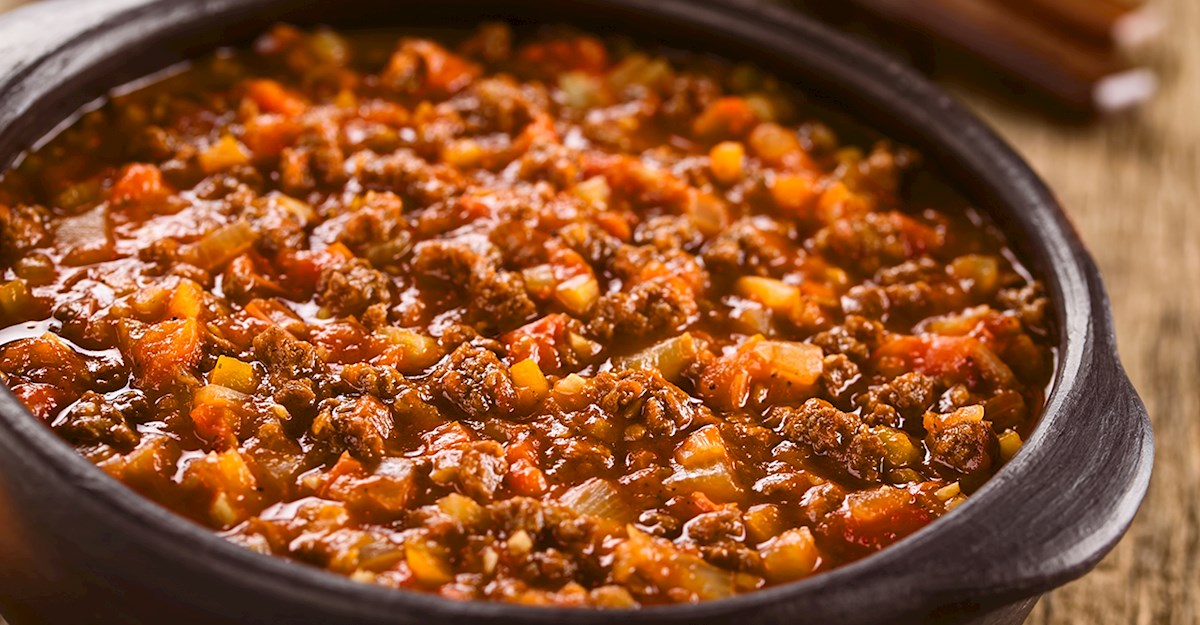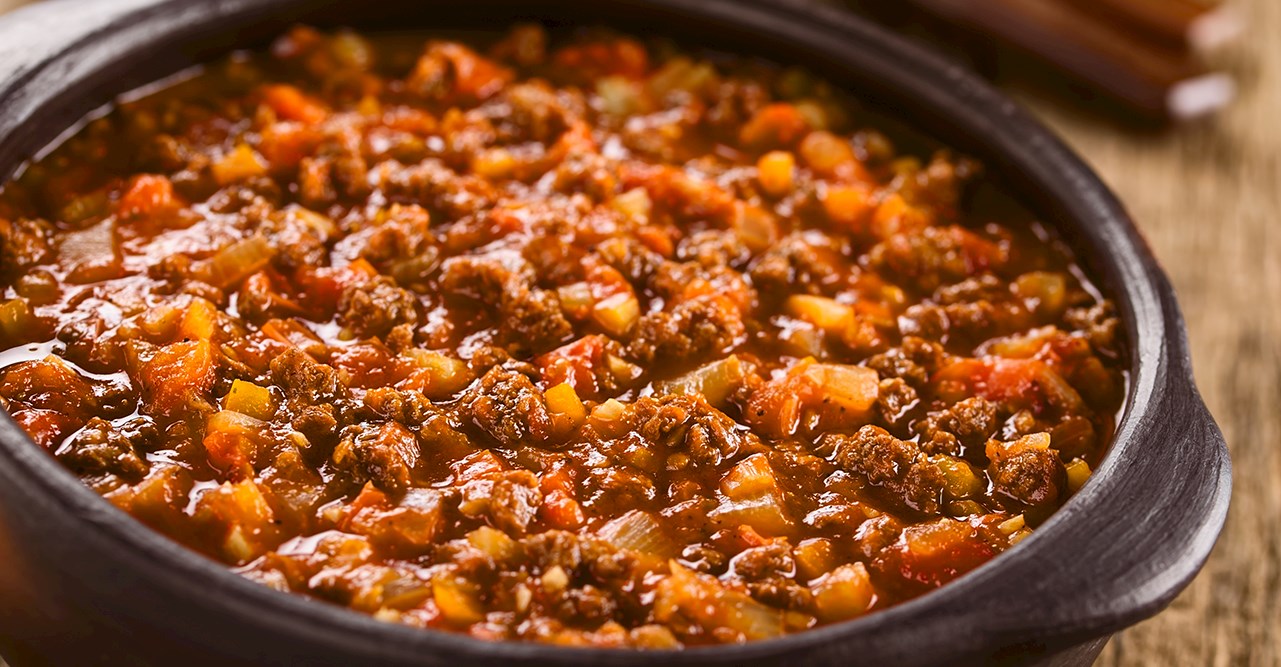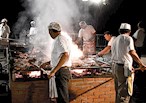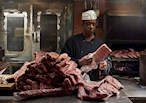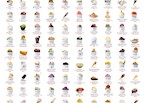For years on end, ever since Pellegrino Artusi first published a ragù recipe in his 1891 La Scienza in Cucina e l'Arte di Mangiar Bene, there's been ongoing debates about what goes into a proper and authentic ragù alla Bolognese and how to best prepare it.
What cut of meat to use, to sauté the meat and vegetables separately or not, questioning if tomatoes have any place in a ragù, whether to use water or stock, and so on.
Thankfully, for over 40 years now, whenever in doubt, we've had a recipe to fall back on — the one that the Italian Academy of Cuisine deposited at the Bologna Chamber of Commerce on October 17, 1982.
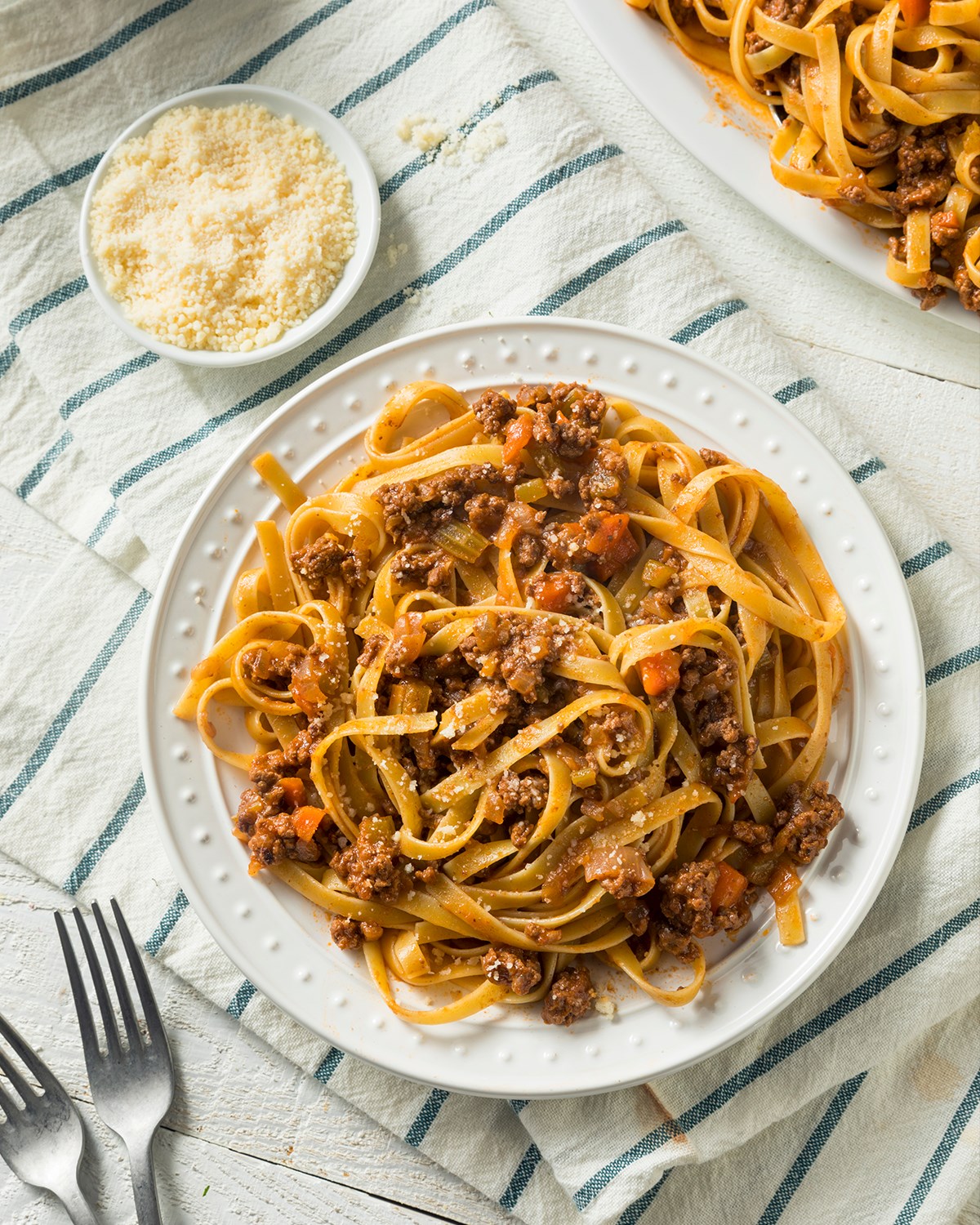 Credits: shutterstock
Credits: shutterstock
So, why the change?
Well, in the 40 years since the recipe has been deposited, times have changed. The habits of the people changed, and so have their tastes, as well as the availability of ingredients, all of which impacted the way ragù alla Bolognese is prepared these days.
In order to preserve the institution of ragù alla Bolognese as well as to reflect the times, the Italian Academy of Cuisine has formed a Study Committee which did an in-depth research on how ragù alla Bolognese is prepared.
The members of the Committee had Pellegrino Artusi's recipe as a starting point but also looked into restaurant and family recipes. Out of a mountain of recipes, 50 were picked as the most noteworthy, and the definitive recipe was drafted.
Then, on April 20, 2023, more than 40 years after the first one, the Italian Academy of Cuisine deposited a new, changed recipe at the Bologna Chamber of Commerce.
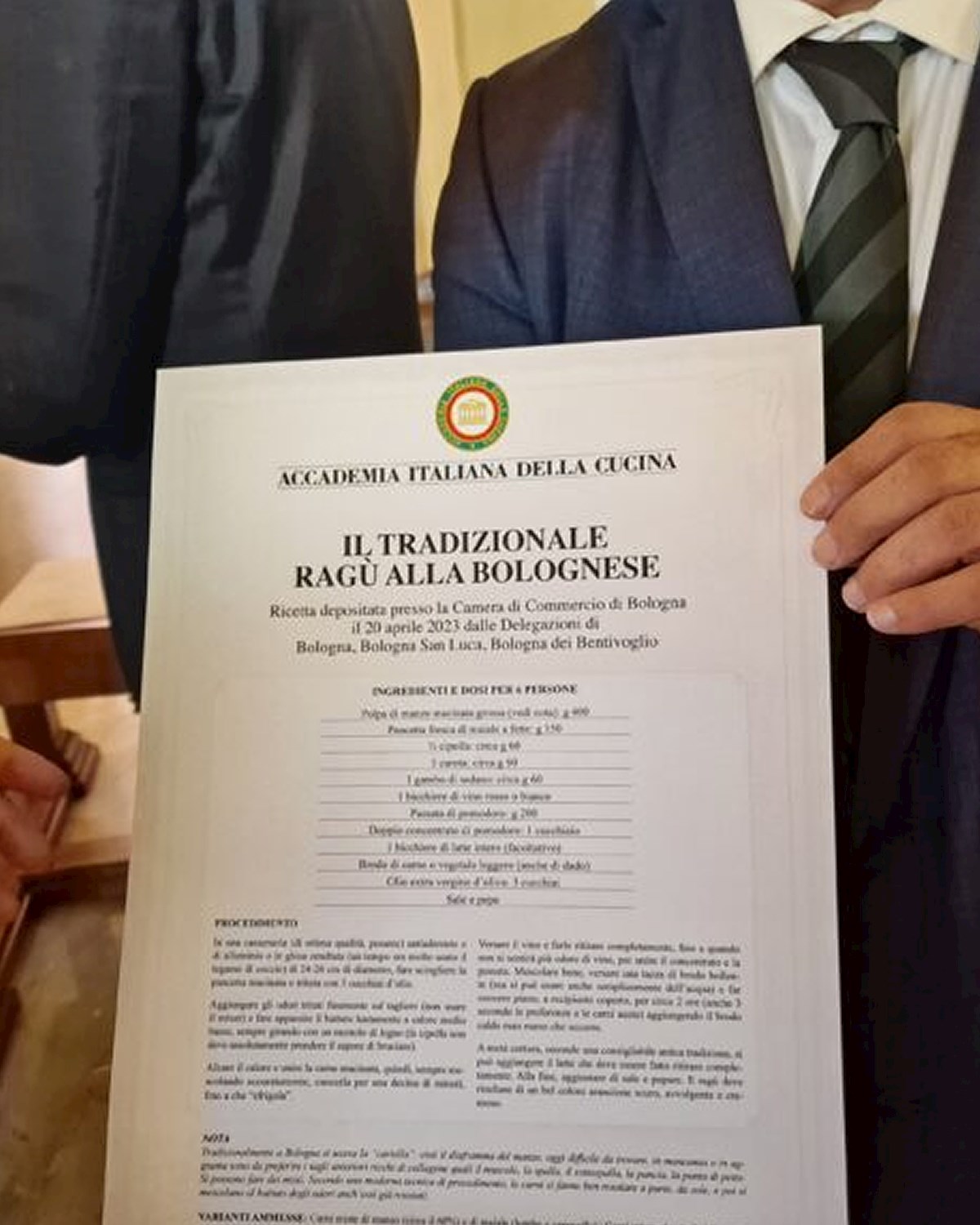 Credits: accademiaitalianadellacucina.it
Credits: accademiaitalianadellacucina.it
The 2023 Ragù alla Bolognese
The new recipe will for sure be a shocker for some, as it seems an entirely different animal compared to the 1982 recipe.
To begin with, due to its unavailability, the cartella (skirt or hanger steak) or the beef diaphragm is out the window, and collagen-rich cuts like shoulder or chuck, brisket, plate, or flank are in. A mix of beef and pork is also allowed.
Another thing that's allowed when it comes to meat is the present-day practice of browning the meat and vegetables separately, which is not how it's done in the 1982 recipe, where it instructs to sautée them together.
Whipped cream is also no more, with some claiming it was only part of the recipe because it was in vogue at the time. But milk is not completely out of the picture though now entirely optional.
Fresh flat or rolled pancetta is now favored in lieu of the unsmoked pancetta, while vegetable broth, light meat stock, boiling water, and even a good-quality stock cube are all acceptable choices.
If all this talk has made you curious to finally discover the entire recipe and all its details, click here.
But wait, there's more
The recipe at the link is the one the Academy recommends, which means variations are allowed, but they have set some clear NOs.
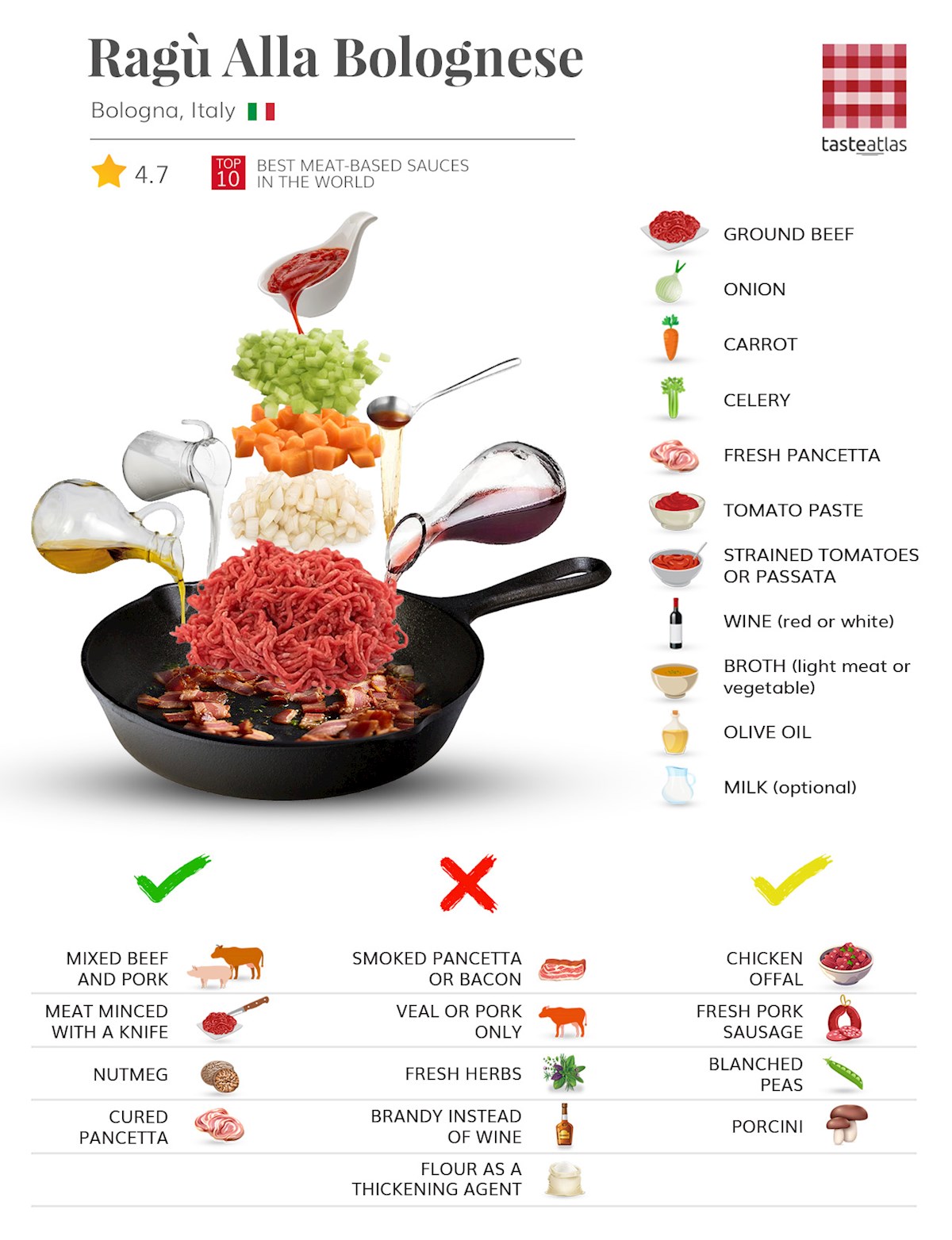
Here's a list of everything the Academy permits and prohibits.
ALLOWED:
• Mixed beef and pork (about 60% beef)
• Meat minced with a knife
• Cured pancetta instead of fresh pancetta
• A pinch of nutmeg
CONSIDERED UNACCEPTABLE:
• Veal
• Smoked pancetta or bacon
• Only pork
• Garlic, rosemary, parsley, or other herbs and spices
• Brandy instead of wine
• Flour as a thickening agent
RAGÙ ALLA BOLOGNESE CAN BE ENRICHED WITH:
• Chicken livers, hearts, and gizzards
• Peeled and crumbled pork sausage
• Blanched peas, added at the end of cooking
• Dried porcini, rehydrated
